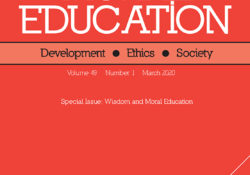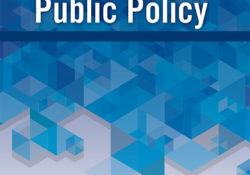
tandfonline.com har udgivet en rapport under søgningen “Teacher Education Mathematics”: ABSTRACT ABSTRACT Home-based parental involvement in early education is linked to beneficial outcomes in children’s development and may redress unequal educational outcomes associated with family background. The type of educational activities at home and the way parents provide their support may differ across parents with and without a migration background. It is unclear whether home-based parental involvement is measured as the same construct across different origin groups. In this study, the psychometric properties of two parent-report questionnaires on home-based parental involvement were evaluated in 131 Dutch mothers of kindergarten-aged children, of whom 47% had a migration background. The dimensional structure of both questionnaires was tested with Principal Component Analysis. Multi-group confirmatory factor analyses were conducted to test for measurement invariance… Continue Reading →
Like this:
Like Loading...
tandfonline.com har udgivet en rapport under søgningen “Teacher Education Mathematics”: Abstract Formulae display:?Mathematical formulae have been encoded as MathML and are displayed in this HTML version using MathJax in order to improve their display. Uncheck the box to turn MathJax off. This feature requires Javascript. Click on a formula to zoom. Over twenty years ago, an article by Richard Phelps addressed the benefits of the United States (US) educational system carrying out a complete adoption of the metric system of measurement. Today we find that the US is still in the same position in teaching both measurement systems in schools, which is a financial drain. This study sought to identify the monetary savings that the US would obtain by teaching only the metric system of measurement in today’s schools. A… Continue Reading →
Like this:
Like Loading...
eric.ed.gov har udgivet: This Teacher Education and Mathematics (TEAM) content module focuses on metric measurement. Topics addressed include decimal structure and prefixes, precision in measurement, reference measures, United States customary and metric systems, volume, area, and conversion. The module consists of: (1) an instructor’s text; (2) an instructor’s guide and solutions to student exercises; (3) student materials and exercises; and (4) student summary and review. The instructor’s text provides specific directions for guiding lessons and commentary on mathematics content and mathematics attitudes. This is accomplished by a “facing pages” format whereby the right-hand page provides step-by-step teaching directives while the left-hand page provides teaching insights, other options of instruction, and psychological or attitudinal strategies, when appropriate. The guide and solutions to exercises gives the instructor approaches to the exercises and… Continue Reading →
Like this:
Like Loading...
tandfonline.com har udgivet en rapport under søgningen “Teacher Education Mathematics”: ABSTRACT ABSTRACT This essay introduces the present special issue on wisdom and moral education, which draws on a conference held in Oxford in 2017. Some of the seven contributions (by Sanderse; Ferkany; and Hatchimonji et al.) make use of the Aristotelian concept of phronesis, or practical wisdom, while others focus more on the wisdom concept as it has developed in contemporary psychology (Huynh and Grossman; Ardelt; and Brocato, Hix and Jayawickreme). One (by Swartwood) straddles the distinction between the two. All the contributions, however, address in different ways practical questions about how wisdom can be evaluated and how it relates to issues of moral development and education. Link til kilde
Like this:
Like Loading...
tandfonline.com har udgivet en rapport under søgningen “Teacher Education Mathematics”: Link til kilde
Like this:
Like Loading...
tandfonline.com har udgivet en rapport under søgningen “Teacher Education Mathematics”: ABSTRACT ABSTRACT This brief article introduces the topic of intelligence as highly appropriate for educational measurement professionals. It describes some of the uses of intelligence tests both historically and currently. It argues why knowledge of intelligence theory and intelligence testing is important for educational measurement professionals. The articles that follow in this special issue will provide readers with considerable information about the history of intelligence theory and testing, and especially of the Cattell-Horn-Carroll (CHC) model of testing and its implementation. The following articles will also provide a well-reasoned approach to the way science should work in evaluating tests and the models on which they are based. Link til kilde
Like this:
Like Loading...

tandfonline.com har udgivet en rapport under søgningen “Teacher Education Mathematics”: Abstract Abstract It is important for self-report scales and measures used by educators and health care professionals (such as the Physical Self-Description Questionnaire-Short Form [PSDQ–S]) to have documented reliability and validity. The aim of this study is to investigate the structural validity of the full PSDQ–S composite scale and 11 subscales using the Rasch Measurement Model. 117 healthy children (65 males and 52 females; M = 10 years, 2 months, SD = 1 year, 4 months) completed the PSDQ–S. The PSDQ–S’s rating scale functioning, dimensionality, hierarchical ordering, differential item functioning (DIF), and item and person separation reliability were examined. Results supported the scale functioning, dimensionality, hierarchical ordering, DIF, and reliability of the PSDQ–S composite scale and each of its 11 subscales. Therefore, the PSDQ–S composite scale and 11… Continue Reading →
Like this:
Like Loading...
eric.ed.gov har udgivet: In this report we provide preliminary evidence on the measurement characteristics for a new type of teaching performance assessment designed to be combined with complementary assessments of teacher content knowledge. The resulting test, which we refer to as the Foundational Assessment of Competencies for Teaching (FACT), is designed for use as part of initial teacher licensure. Twenty elementary FACT performance tasks (10 for mathematics [MATH] and 10 for reading language arts [RLA]) were developed and then administered to 59 teacher candidates. The results from the pilot indicate that the performance tasks function as designed with candidates completing the tasks on average in approximately 3.5 min. Human raters were able to score the tasks quickly and accurately. All score points were well represented for all the scored tasks.… Continue Reading →
Like this:
Like Loading...
tandfonline.com har udgivet en rapport under søgningen “Teacher Education Mathematics”: Abstract The position statement on value-added models published by the American Statistical Association (ASA) suggested guidelines and issues to consider when using value-added models as a component of a teacher evaluation system. One suggestion offered is that value-added results should be accompanied by measures of precision. It is important, however, to go beyond simply reporting measures of precision alongside point estimates, but instead to formally include measures of precision into the value-added models and teacher classification systems. This practice will lead to improved inferences and reduced misclassification rates. Therefore, the aim of this article is to offer two suggested approaches for including measures of precision into the value-added model process. The first suggestion is to account for measurement error in… Continue Reading →
Like this:
Like Loading...






